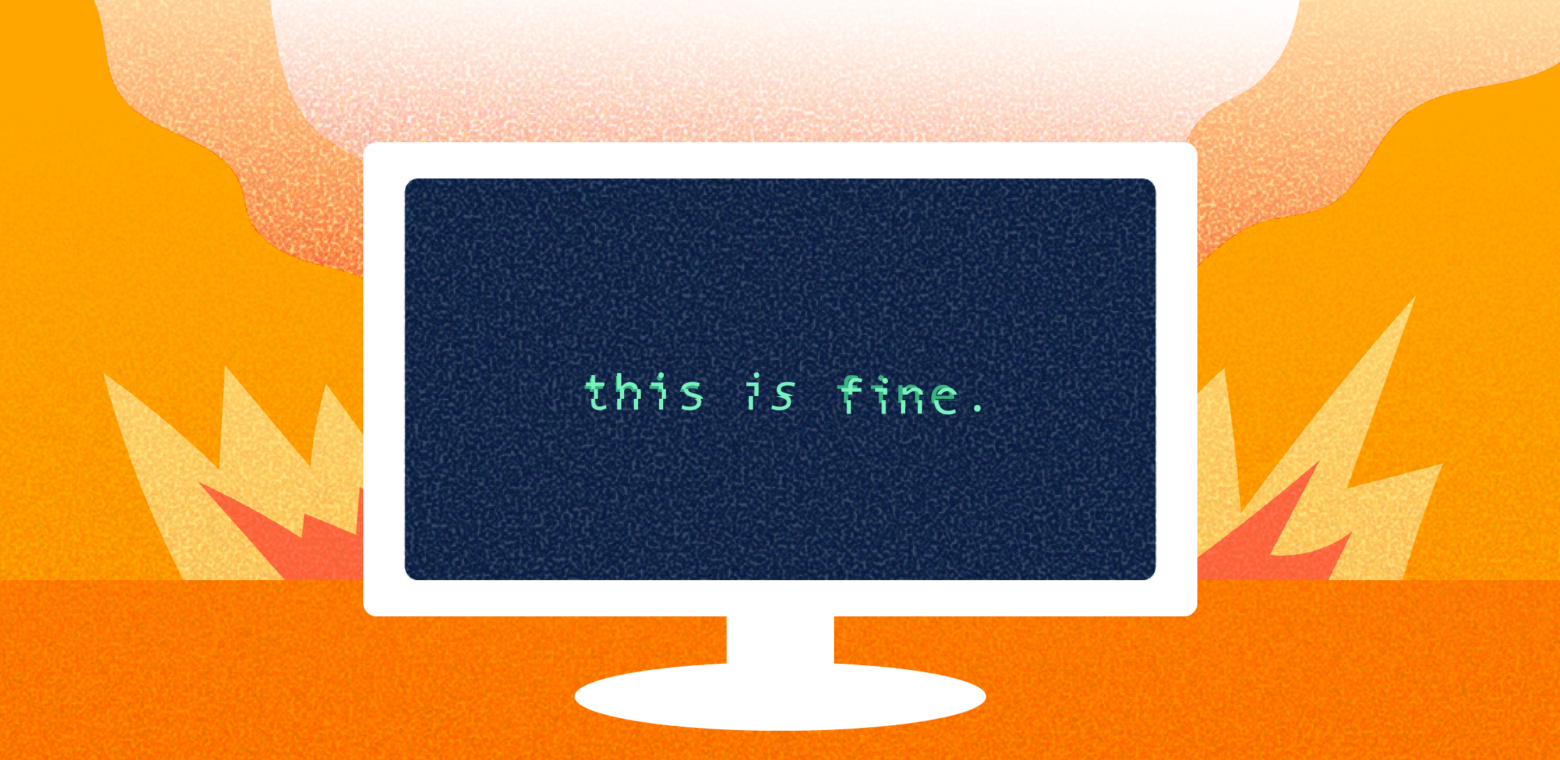Everyone has days when, under the pressure of a tight deadline or a big project, the stress is acute and their nerves are frayed. But when the feeling of being completely overwhelmed at work persists, it can spiral into burnout — an epidemic with serious consequences for your health and your career.
What is burnout? It’s when you feel completely mentally, physically, and emotionally drained and depleted. You’re tapped out. You’re exhausted. You’re running on empty. It’s a big deal.
Such a big deal in fact, that in 2019, the World Health Organization (WHO) classified burnout as an “occupational phenomenon,” recognizing it as a legitimate reason why people might need to access health services.
Was the WHO’s announcement a turning point for all of us? Not exactly. In fact, burnout has only gotten worse since WHO’s proclamation. About 59% of workers say they’re experiencing at least moderate levels of burnout – on par with the levels reported in the thick of the pandemic – and 53% of managers say they feel burned out at work.
But how can you tell if you’re burned out, versus temporarily stressed? And even more importantly, what the heck should you do to address it? Here’s your realistic guide to bouncing back and beating burnout at work.
Burnout symptoms: How to tell if you’re suffering from burnout
First things first: you need to know what you’re dealing with, because there’s a difference between a bad day (we all have them) and true burnout. When you look for the various signs of burnout within yourself and your daily routines, pay attention to:
- Duration: How long do your negative feelings last? Are they fleeting or more permanent?
- Frequency: How frequently do those negative feelings crop up? Do you feel them regularly or only randomly?
- Intensity: How severe are those negative feelings? Are they a minor nuisance, or do they throw you off for the rest of the day or week?
When it comes to identifying the actual burnout symptoms, you’ll want to pay attention to three key aspects: your body, your mood, and your habits. In the context of those three categories, here are some signs of burnout to keep an eye out for:
Check your body
How you feel physically can betray a lot about your mental state. A few physical signs of burnout include:
- Fatigue and physical exhaustion
- Stomach aches and bowel problems
- Tension headaches
Check your mood
It’s tough to act like yourself when you don’t really feel like yourself. As the Mayo Clinic explains, burnout can make you feel:
- Increasingly cynical or critical at work
- Irritable or impatient with your co-workers, customers, or other people you work with
- Snappy and testy with people you love (unfortunately, you can’t leave burnout at work)
- Unable to focus and concentrate
- A lack of satisfaction from your achievements
- De-energized and unmotivated to be consistently productive
Check your habits
When you’re burned out, you do what you need to do to make it through the day — and that can lead to a noticeable shift in a lot of your habits and routines. For example, you might:
- Use drugs or alcohol to numb or alter your feelings
- Struggle with insomnia or changed sleep habits
- Eat differently (either more or less) than you usually do
“The WHO message is a wake up call,” says psychologist James Campbell Quick, PhD, a fellow of the American Psychological Association who has studied the phenomenon extensively. High levels of stress (which is essentially what burnout is), have been linked to heart disease, liver disease, and “pretty much a greater risk of every chronic disease that you can have,” notes Siobhan Murray, a Resilience and Life Coach and author of The Burnout Solution.
How to recover from burnout: 6 strategies to bounce back better
If you notice several of the above signs of burnout — particularly a few from each category — then chances are good you’re burned out.
So…now what? The tricky thing about burnout is that you’re already exhausted, which makes it all the more challenging to gather the gumption to make some changes. But when you do figure out how to recover from burnout, you not only bounce back — you make meaningful changes that benefit you in th long-term.
Here are six strategies to help you recover from burnout and move forward.
1. Clear the clutter
There are numerous different triggers or causes of burnout — but having way too much to do is definitely a big one. That’s why one of your first steps should be to take stock of your job responsibilities and identify areas of overwhelm. Then, try to clear the clutter, suggests Murray.
Have you signed up for a project or committee that you can let go of? Is there a recurring meeting you can remove from your calendar?
Getting those obligations — even if they’re small — off your calendar and out of your brain can make your overall work life feel more manageable.
As you do this, it’s also worth paying attention to what activities or obligations drain your energy versus what fills you up, explains Quick. Look at your calendar and grade everything you’re scheduled to do as either a “Drain” or a “Fill,” then limit your exposure to those Drains.
What if one of your colleagues — or worse, your boss — is a Drain and you’re forced to spend time with them? “Make sure there’s a Fill on your calendar somewhere else that day,” says Quick.
2. Prioritize self-care
Self-care is often talked about in the context of bubble baths and massages (and if those fit into your schedule and budget, by all means go for it). But truly taking care of yourself is rooted in the basics of wellbeing:
- Are you getting adequate sleep?
- Are you fueling your body with nutritious foods?
- Are you making time for exercise — even if it’s just a quick walk?
Murray says that, understandably, those are all things that burned out people struggle to do. But prioritizing your diet, exercise, and sleep habits can make a big difference. For example, one 2017 study revealed that exercise is crucial in preventing and reversing work-related burnout.
3. Build an identity outside of work
Some of us base our entire identity on what we do for a job (it’s why “what do you do?” is such popular cocktail party fodder). This puts us at risk for full-blown work addiction.
You might think that working extra hard will help you finally conquer your towering pile of to-dos and move on from burnout, but the opposite is true. Research shows that doing work-related activities on weekends only detracts from your wellbeing and energy levels.
Instead, try detaching from your work and investing time and energy into hobbies or interests that “fill your cup.” Whether it’s taking a pottery class or reading a book in your backyard, finding some outlets and leisure activities that are totally separate from your work will help you feel more restored and recharged.
4. Have the hard conversations
In many cases, burnout isn’t something you’ll resolve on your own — addressing it will likely require some broader changes, which means your manager will need to get involved.
Have you taken on way too much at work and need to back out of some commitments? Is one of your job responsibilities not at all aligned with what you want to be doing? Could you use more support or better resources? Are you struggling with something else in your personal life? Do you need to take extended leave or even find another job?
Those can all feel like sensitive topics to talk through with your supervisor, but getting candid and vulnerable (not just with your supervisor, but with yourself) can help you make meaningful changes that not only address burnout right now, but course correct for the future too.
And when it comes to setting boundaries as you move forward, try this trick: say, “I don’t” instead of, “I can’t.” For example, “I don’t have the bandwidth for that right now” instead of, “I can’t do that.”
According to a 2012 study in the Journal of Consumer Research, this strategy is powerful because “I don’t” establishes a firm rule about your availability and willingness to do something. “I can’t” on the other hand, leaves room for the asker to suggest scenarios under which you could be able to take on the task.
5. Get the right support
Despite the fact that a large percentage of people grapple with burnout, it can still feel isolating — even embarrassing or shameful. Try to resist the urge to retreat within yourself.
Research suggests job-related stress may hit people harder if they’re not getting support at home or from their social network. You don’t have to throw a dinner party, says Murray. Just make an effort to chat with your neighbor or meet a friend for coffee.
If you’re struggling to recover from burnout even with the encouragement of your social circle, it might be time to turn to a professional. A therapist can give you tangible stress management techniques that will help you as you navigate burnout.
6. Take a break
We get it — “take a vacation” or “unplug” sounds like trite advice. And the truth is, a short break on its own won’t do much for you. One study found that, while a vacation led to modest decreases in exhaustion as well as modest increases in life satisfaction, those benefits vanished within two to four weeks of resuming work.
Pressing pause can give you a reset and some much-needed time away from the demands of your daily work life. Just make sure that you don’t only take a break. Combine that time off with some of the other burnout tips on this list — otherwise, you might return to the same circumstances and kickstart the burnout cycle all over again.
Begin your own burnout bounceback
Try to remember that burnout is a state of being — it doesn’t have to be a life sentence. While it can be hard to summon the motivation to make meaningful changes when you’re already feeling drained, the above tips can help you determine how to recover from burnout as well as how to keep it at bay in the future.
Put them to work for yourself and you won’t just bounce back from burnout — you’ll come back even better than before.
Special thanks to Kat Boogaard for her contributions to this article.










































